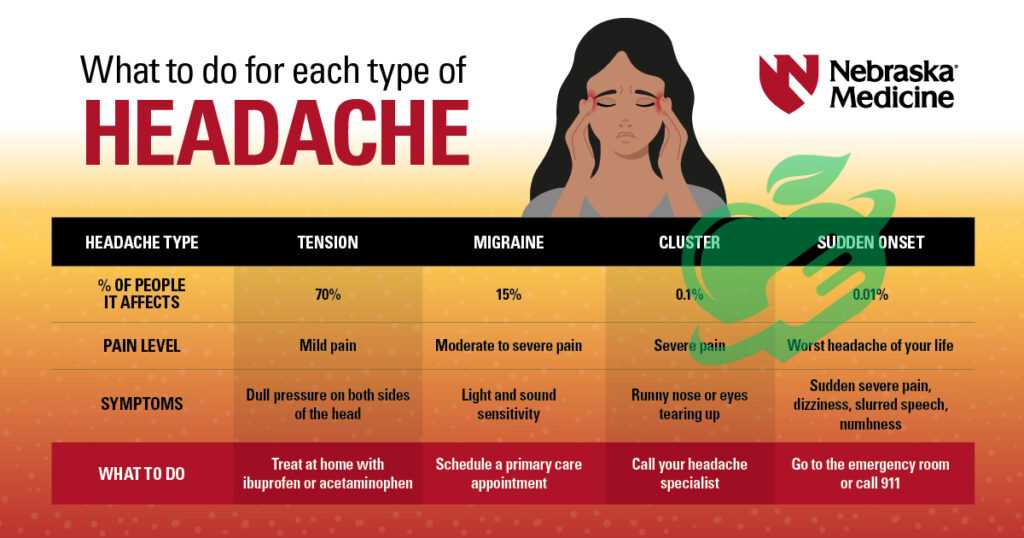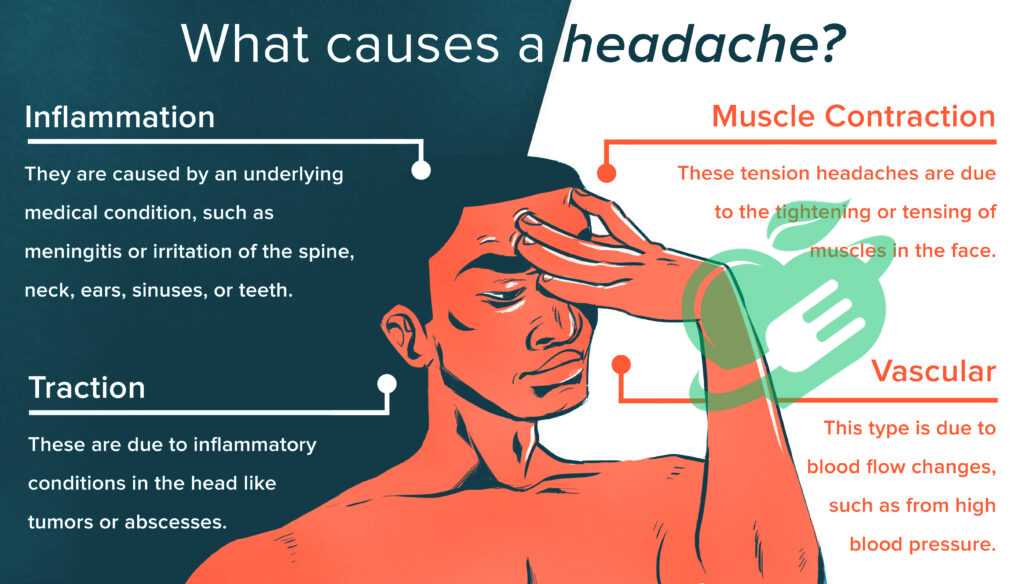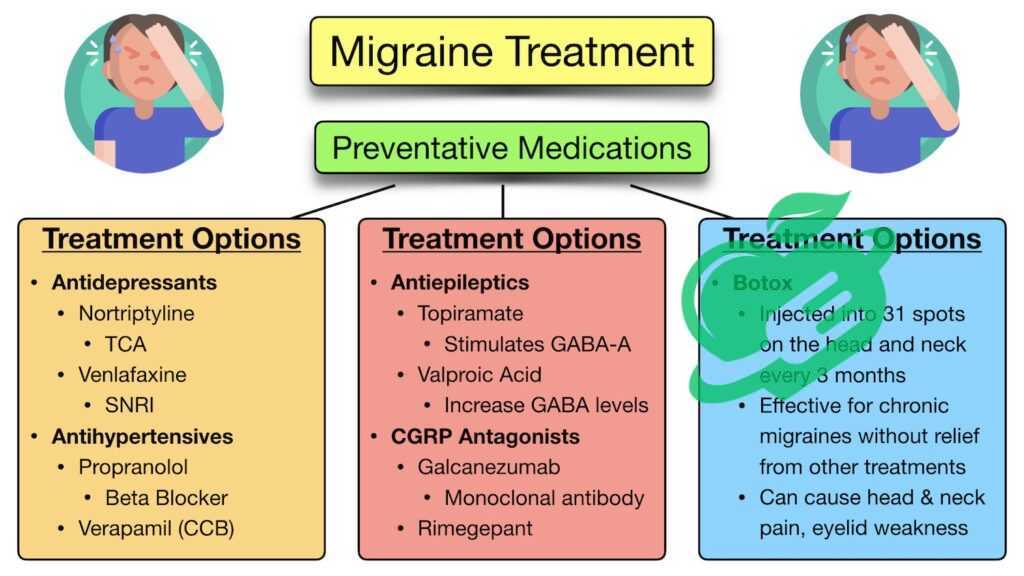Why Does the Top of My Head Hurt? Find Out Now

Overview of Different Types of Headaches
Top of the Headache is a common prevalence, with many individuals experiencing them at different points in their lives. Understanding the various types can greatly assist in managing and reducing their occurrence. Here’s a brief overview:
- Tension Headaches: Often caused by stress or muscle tension, these headaches feel like a tight band around the head.
- Migraines: These are more severe, often accompanied by nausea and sensitivity to light or sound. A personal account shared by a friend illustrated how debilitating migraines can be, forcing him to retreat to a dark room for recovery.
- Cluster Headaches: These headaches are extremely painful and occur in cyclical patterns or clusters. They typically impact sleep patterns, making them particularly disruptive.
- Sinus Headaches: Resulting from sinus infections, these headaches cause pain in the forehead, cheeks, and around the eyes.
Recognizing which type one is dealing with can guide effective treatment and pain relief strategies.
Impact of Headaches on Daily Life
Headaches can drastically alter one’s day-to-day activities. Imagine planning a day full of errands or socializing, only to be knocked down by a sudden headache. The interruption can lead to missed opportunities, including:
- Work Productivity: Concentration fades, deadlines may be missed, and workplace productivity diminishes significantly.
- Social Interactions: Individuals often find themselves canceling plans with friends or family to accommodate a throbbing headache.
- Physical Activity: Outdoor activities, workouts, or even simple walks may become neglected, leading to an overall decline in health and well-being.
Consider a weekend family outing; if a headache strikes, it might not just ruin that day but can have a ripple effect on subsequent days, fostering an ongoing cycle of discomfort and frustration. Chronic headache sufferers often report feelings of isolation and anxiety, as the fear of an impending headache can impede their enjoyment of life. In summary, headaches aren’t just a physical nuisance; they can profoundly impact various aspects of life. Recognizing their types and understanding their effects is the first step toward managing them effectively and improving one’s overall quality of life.
Sinusitis or migraine?
Migraine symptoms can easily be mistaken for those of sinus headaches due to their similarities.
The discomfort from migraines and sinusitis tends to intensify when leaning forward. Migraines may also present various nasal symptoms, including congestion, facial pressure, and a clear, watery nasal discharge. This is linked to the impact of the autonomic nervous system during a migraine episode. Research indicates that a majority of patients who seek medical attention for sinus headaches are diagnosed with migraines.
It is important to highlight that sinusitis typically does not present with symptoms such as nausea, vomiting, or pain that worsens with loud sounds or bright lights, which are commonly associated with migraines.
Sinusitis is usually characterized by:
- It happens following a viral upper respiratory infection or a cold.
- Symptoms consist of a thick, unusual-colored nasal discharge.
- It is linked to a reduced ability to smell.
- This leads to discomfort in one side of the cheek or the upper row of teeth.
The headache caused by sinusitis can persist for several days or longer, whereas migraines typically last for a few hours or up to a couple of days.
Read also: Headaches from MS? Discover the Best Remedies

Common Triggers of Headaches
Stress and Anxiety
One of the leading culprits behind headaches is stress and anxiety. In today’s fast-paced world, many experience the overwhelming pressure of work deadlines, family responsibilities, and personal expectations. These factors contribute to muscle tension in the neck and shoulders, leading to tension headaches.
- Example: A colleague once recounted how juggling work and family commitments often left her with debilitating headaches that would strike just before important meetings. Identifying stress as a trigger helped her prioritize relaxation techniques, like deep breathing and meditation, to mitigate the onset of pain.
Dehydration and Hunger-Top of the Headache
Another common trigger is dehydration or hunger. Our bodies require a balance of hydration and nutrients to function optimally.
- Signs of Dehydration: Dry mouth, fatigue, and yes, headaches!
- Tips to Stay Hydrated:
- Carry a water bottle throughout the day.
- Set reminders to drink water every hour.
A personal story from a fitness enthusiast highlights this point. After an intense workout without adequate water or nutrition beforehand, the individual experienced a severe headache that sidelined their training for days.
Sleep Patterns
Sleep plays a crucial role in headache management as well. Irregular sleep patterns, whether it’s too much or too little sleep, can disrupt the body’s internal rhythm.
- Sleep Recommendations:
- Aim for 7-9 hours of quality sleep each night.
- Establish a consistent sleep schedule, even on weekends.
A friend learned this firsthand when their late-night binge-watching sessions became a weekly ritual, resulting in chronic headaches that affected daily productivity and mood.
Dietary Factors
Lastly, what we eat can directly impact our likelihood of experiencing headaches. Certain foods known to trigger headaches include:
- Caffeine: While a morning cup can invigorate, excessive consumption can lead to withdrawal headaches.
- Alcohol: Particularly red wine, known for causing migraines in some individuals.
- Processed Foods: High in preservatives, these can lead to tension or migraine headaches.
A family member shared how reducing processed foods and increasing whole, nutritious options significantly decreased the frequency of their headaches. In conclusion, understanding these common triggers allows individuals to make proactive changes, enhancing their chances of living headache-free. By addressing stress, hydration, sleep, and dietary habits, one can significantly reduce the frequency and intensity of headaches.
Read also: Simple Solutions for Headache Behind Eyes.

Lifestyle Changes for Headache Prevention
Importance of Regular Exercise
One of the most effective lifestyle changes for preventing headaches is incorporating regular exercise into daily routines. Physical activity promotes the release of endorphins, which are natural pain relievers, thereby reducing stress and tension.
- Benefits of Exercise:
- Boosts mood.
- Enhances sleep quality.
- Reduces muscle tension.
A friend of mine, who once suffered from frequent tension headaches, started a simple routine of walking every morning. Within weeks, she noticed fewer headaches and an overall uplift in her mood. It’s a perfect example of how even low-impact exercises like walking, yoga, or swimming can lead to significant benefits.
Managing Stress Levels-Top of the Headache
Given that stress is a prominent trigger for headaches, managing stress is pivotal. Stress management techniques can be tailored to fit individual preferences, leading to a more balanced life.
- Effective Stress Reduction Techniques:
- Mindfulness and Meditation: Taking just 10 minutes a day to focus on breathing and being present can work wonders.
- Time Management: Planning daily tasks can help alleviate feelings of being overwhelmed.
- Hobbies: Engaging in enjoyable activities is crucial for mental health.
I recall a period when work pressures mounted, leading to frequent headaches. Embracing mindfulness practices and scheduling time for leisure activities dramatically improved my mental and physical well-being.
Hydration and Nutrition
Staying properly hydrated and maintaining a balanced diet are essential components of headache prevention.
- Hydration Tips:
- Drink water consistently throughout the day.
- Incorporate water-rich foods like cucumbers, oranges, and watermelon.
- Nutritional Considerations:
- Consume a well-balanced diet rich in fruits, vegetables, whole grains, and lean proteins.
- Avoid known dietary triggers, such as excessive caffeine and alcohol.
A coworker learned how a simple change in her diet—reducing processed foods and increasing hydration—made a difference in her headache frequency. Like a new light bulb turning on, she felt more energized and alert. In conclusion, by embracing these lifestyle changes—regular exercise, stress management, and mindful hydration and nutrition—individuals can significantly reduce the likelihood of headaches disrupting their lives. Taking small, consistent steps can lead to substantial ties to improved health and overall well-being.
Read also: The Ultimate Sinus Surgery Survival Guide: Tips for a Smooth Recovery.

Natural Remedies for Headache Relief
Aromatherapy-Top of the Headache
When it comes to finding natural relief for headaches, aromatherapy is a gentle yet effective option. This practice involves using essential oils derived from plants to promote relaxation and soothe discomfort.
- Popular Essential Oils for Headaches:
- Peppermint Oil: Known for its cooling effect, it can help increase circulation and relieve tension.
- Lavender Oil: Renowned for its calming properties, it reduces stress and encourages better sleep.
- Eucalyptus Oil: Particularly helpful for sinus-related headaches.
A personal experience exemplifies the effectiveness of aromatherapy. A family member often turns to peppermint oil during migraine episodes. Applying it to her temples and the back of her neck not only alleviates tension but also provides a refreshing sensation that aids in relaxation.
Herbal Supplements
In addition to essential oils, various herbal supplements have been shown to help combat headaches. Integrating these into one’s diet may offer extra support.
- Options to Consider:
- Feverfew: Often used for migraine prevention, this herb has shown promising results in relieving headache symptoms.
- Ginger: Known for its anti-inflammatory properties, ginger can reduce the severity of headaches and even help with nausea.
- Willow Bark: Sometimes referred to as “nature’s aspirin,” this herb has been utilized for centuries to relieve pain.
During a particularly stressful period, a friend decided to add ginger tea to her diet. She found it not only improved her digestive health but also kept her headaches at bay.
Acupressure and Massage
Both acupressure and massage can provide immediate relief from headaches by targeting key pressure points and relaxing tense muscles.
- Acupressure Techniques:
- Target points like the space between your thumb and index finger, which can quickly alleviate tension headaches.
- Pressing on the base of the skull can also offer soothing relief.
In my own experience, a brief 15-minute self-massage on my neck and shoulders during a headache has often led to immediate comfort.
- Benefits of Massage:
- Eases muscle tension.
- Promotes blood circulation.
- Encourages relaxation.
In conclusion, exploring these natural remedies—aromatherapy, herbal supplements, and acupressure—can be an effective approach to headache relief. Each method offers a holistic way to alleviate pain while promoting overall wellness. By embracing such strategies, individuals can take charge of their health and significantly improve their quality of life.
Read also; Headaches from MS? Discover the Best Remedies.

Over-the-counter and Prescription Medications
Analgesics-Top of the Headache
When headaches strike, many individuals first reach for over-the-counter analgesics. These medications are commonly available and can provide quick relief for mild to moderate pain.
- Popular Analgesics:
- Acetaminophen (Tylenol): Effective for mild pain relief, it is often recommended for tension headaches.
- Nonsteroidal Anti-Inflammatory Drugs (NSAIDs): Options like ibuprofen (Advil, Motrin) or naproxen (Aleve) can help reduce both pain and inflammation, making them suitable choices for headaches that come with muscular tension or minor inflammation.
I recall a time when I had a sudden onset of a tension headache after a long day at work. Reaching for some ibuprofen offered noticeable relief in under an hour, allowing me to enjoy the evening without discomfort.
Triptans
For individuals who suffer from migraines, triptans are often the go-to prescription medication. These medications specifically target the mechanisms behind migraine attacks by constricting blood vessels and blocking pain pathways in the brain.
- Types of Triptans:
- Sumatriptan (Imitrex): Available in oral, nasal spray, or injection forms, it is one of the most commonly prescribed triptans.
- Rizatriptan (Maxalt): This comes in tablet form and is favored for quick relief.
A friend who used to suffer from debilitating migraines found significant improvement after being prescribed sumatriptan. The onset of relief was quick enough to allow her to return to her daily activities, proving vital for her productivity.
Preventive Medications
For frequent headache sufferers, preventive medications may be recommended. These are taken regularly to reduce the frequency and severity of headaches rather than treating them once they occur.
- Common Preventive Medications:
- Beta-Blockers: Medications like propranolol are often used for migraine prevention.
- Antidepressants: Certain types, such as amitriptyline, can be effective for headache prevention, even for those without depressive symptoms.
- Anti-Seizure Drugs: Topiramate is sometimes prescribed for migraine prevention.
A colleague benefited greatly from preventive medication, reporting fewer migraine days each month after starting amitriptyline. This change afforded her greater peace of mind and improved her overall quality of life. In summary, while natural remedies can be beneficial, over-the-counter and prescription medications play a crucial role in headache management. By understanding the various options—analgesics for instant relief, triptans for migraine attacks, and preventive medications for ongoing management—individuals can find effective strategies to combat headaches and maintain a fulfilling lifestyle.
Read also: Headaches on Repeat: A Guide to Your Daily Struggle.

When to Consult a Doctor
While many headaches can be managed at home, there comes a time for some individuals when consulting a doctor becomes essential. It’s crucial to be mindful of warning signs that indicate a need for professional evaluation.
- Key Reasons to Seek Medical Attention:
- Sudden Severe Headaches: If you experience a headache that comes on rapidly, often described as a “thunderclap,” it could signal a serious condition.
- Persistent Pain: Headaches that last for several days or occur frequently might indicate an underlying issue.
- Accompanied Symptoms: If headaches are accompanied by symptoms such as vision changes, dizziness, confusion, or neurological deficits, seeking medical help is advisable.
A friend once ignored persistent headaches, chalking them up to stress, until he experienced blurred vision and slurred speech. A prompt visit to the doctor revealed a serious health condition that required immediate attention.
Treatment options for headaches
Once a doctor is consulted, various treatment options may be considered depending on the diagnosis. Treatments can range from medication to lifestyle changes.
- Medication Options:
- Prescription Medications: As discussed earlier, these can include triptans for migraines and preventive drugs for frequent headaches.
- Physical Therapy: This can help with tension headaches related to muscle tightness or bad posture.
- Alternative Therapies:
- Cognitive Behavioral Therapy (CBT): This can be useful for managing headaches linked to stress or anxiety.
- Biofeedback: This technique improves awareness of physiological functions and helps in managing headache pain.
When my coworker began seeing a physical therapist for neck issues contributing to her headaches, she was pleasantly surprised by the significant decrease in both frequency and intensity.
The importance of correct diagnosis of headaches
Getting a proper diagnosis is essential in effectively addressing headaches. Various types of headaches can occur, and understanding the specific type can greatly influence treatment.
- Diagnosis Process:
- Medical History: A thorough discussion of headache patterns, frequency, and duration can provide valuable insights.
- Physical Exams and Tests: Imaging tests, such as MRI or CT scans, may be needed to rule out serious conditions.
In my own experience, after being diagnosed with migraines rather than tension headaches, I was able to adopt a tailored treatment plan involving both medication and lifestyle changes that specifically addressed my triggers. In conclusion, knowing when to seek professional help, understanding available treatment options, and recognizing the importance of proper diagnosis are key steps in effectively managing headaches. By taking proactive measures, individuals can regain control and alleviate the impact headaches have on their lives.
Because your health is the most valuable thing you have and the most precious thing we care about, we always recommend that you consult your specialist doctor in everything related to your health and daily life. Everything we provide here is for awareness purposes only and does not replace consulting a doctor. Every person has a unique condition that deserves special care, and we are here by your side, working passionately to provide the information you need. Always follow us, because we write for you with love and sincerity to remain a source that inspires you with hope and supports you on your journey towards a better life.



